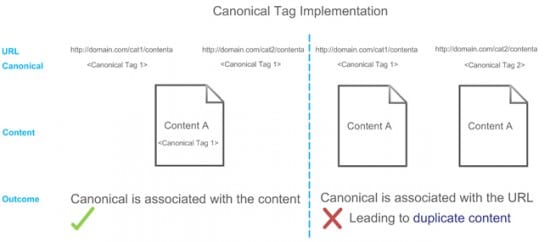Examples showing how SEO recommendations should be briefed for implementation
SEO recommendations are often highly technical and specific in nature. One common mistake businesses make when implementing changes recommended by their SEO Agency is to not clearly communicate why the changes are needed in the first place.
Recommendations often pass through two or more people before they get implemented – from the SEO Expert, to a Marketing Exec (non-techy), to their internal/external Developer for example. On some occasions, this means the reasoning behind the recommendation is lost along the way and it can have a devastating effect on your SEO.
This article gives insight into a few examples of things that could go wrong if SEO recommendations are misinterpreted during the implementation process...
Canonical tag misrepresentation
As an SEO, recommending the addition of canonicals is a matter of best practice. It can address known duplicate content issues, as well as guarding against any unforeseen duplicate issues that could potentially crop up in future.
Example of a canonical recommendation:
“Please add canonical tags to all pages, to prevent duplicate content. It must be placed in the <head> section in the following format…?.”
If a Developer isn’t fed the reason as to what canonical tags are and why they are added, then the way they are implemented could potentially be compromised.
For example there has been on-page SEO implementations of canonical tags whereby a Developer has literally just added canonical tags to pages without thought. They did so, not in a way that fulfilled their purpose for SEO, but instead that wrote a rule that extracted the current URL and used that URL in the canonical tag.
This can actually be worse than not having canonicals at all because now you potentially have lots of duplicate URLs all canonicalising to themselves - which will be giving conflicting messages to the search engines.
The correct implementation is to associate canonical tags with content and not URL’s. This means that whichever URL a duplicate version is served on, the tag always references the preferred canonical URL for that content.
A diagram to show the two methods of implementing canonical tags - the correct and incorrect way:

Hiding Content
Hiding certain content is necessary in SEO. It can be an easy way to prevent duplicate content issues occurring. For example, by hiding landing pages, hiding staging or development sites.
Example of a Staging site recommendation:
“Urgent: Your staging site is indexed and ranking in SERPs, can you hide it because most of the content is duplicated from the main site and your competitors can easily see what you are planning to do before you do it. All you need to do is add a robots file to your staging sub domain (that includes ‘disallow all’ statement…etc.”

This example could be quickly and easily fixed, however it would cause serious concern for a few hours or so!
Campaign Landing Pages
Many companies create landing pages for various campaigns, be it for PPC, email campaigns or for a special offer they want to promote.
Sometimes it is best that we exclude landing pages from SERPs if you are testing and don’t want similar versions being read by search engines or your data polluting with organic traffic.
Example Landing Page folder recommendation:
“As a matter of best practice we recommend you hide the folder with your landing pages in it using robots.txt.”
While this might have been implemented correctly, if at a later date, you create a folder containing landing pages that has a similar name to other pages on your main site – a problem could occur. Example, your landing page folder is=s called = http://www.client.com/key-word-systems.html, this page would
It is recommended that you make this landing folder as unique as possible and exclude it in robots.txt. If you don’t make it unique, then this could inadvertently cause the above issue.
What we can learn from all this about SEO?
When giving recommendations to improve SEO, you have to be extremely specific with instructions and you must go that extra mile to educate the person actually implementing the changes as to the reasons behind the change.
Education is the key to this because it will encourage the Development team to think about the changes they are making from an SEO perspective and understand the sometimes very serious implications of getting it wrong.
As SEO’s we need to be on our toes, and provide as much information as possible to try to second guess potential problems that can occur if our recommendations are interpreted incorrectly.
Hopefully this article will go some way in ensuring people think that bit more about the potential outcomes that may arise if SEO recommendations are misinterpreted or not articulated in full to the person making the changes.

Thanks to
Jimmy McCann for sharing his advice and opinions in this post. Jimmy is Head of SEO at Search Laboratory in Leeds. You can follow him on
Twitter or connect on
LinkedIn





 Thanks to
Thanks to 


